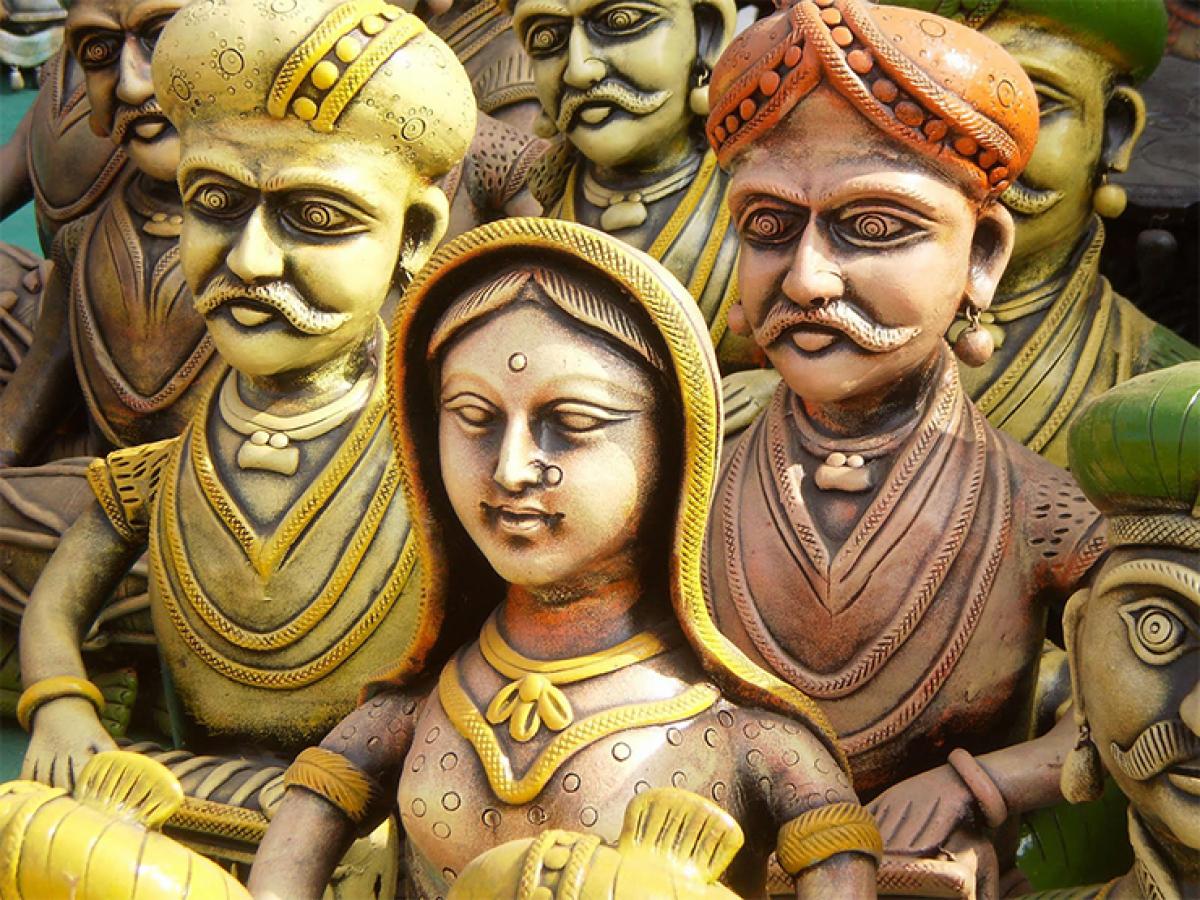Live
- GMR Airports Unveils AI-Powered Digital Twin Platform to Transform Airport Operations
- India poised to become leading maritime player: PM Modi
- Top Causes of Kidney Stones and How to Recognize Silent Symptoms
- India’s renewable energy capacity logs 14.2 pc growth at 213.7 GW
- Winter Session of Odisha Assembly adjourned sine die
- Biden calls Trump's tariff approach 'major mistake'
- After Drama Over Eknath Shinde’s Chief Minister Race, Maharashtra Cabinet Formation Faces New Tensions
- Egyptian FM, Blinken discuss recent developments in Syria
- Iran's supreme leader says Syria's developments result of US-Israeli 'plot'
- Elon Musk to Purchase $100 Million Luxury Mansion Next to Donald Trump's Mar-a-Lago, Report Reveals
Just In

Economically agriculture was the main occupation of the people. Since the rulers were constantly at war, they did not have the time to improve agricultural conditions of the land. Foreign trade was flourishing under the Mughals. India imported pearls, raw silk, wool, dates, dried fruits from the Persian Gulf region;
India exhibited many contrasts and contradictions in the eighteenth century
Economy
Economically agriculture was the main occupation of the people. Since the rulers were constantly at war, they did not have the time to improve agricultural conditions of the land. Foreign trade was flourishing under the Mughals. India imported pearls, raw silk, wool, dates, dried fruits from the Persian Gulf region; Coffee, gold, drugs and honey from Arabia; tea, porcelain and silk came into India from China; luxury goods were also brought in from Tibet, Singapore, Indonesian Islands, Africa and Europe.
Indian exported raw silk, silk fabrics, indigo, sugar, pepper and many other things. India’s cotton textiles were famous all over the world. In spite of such a favourable balance of trade, India’s economic condition could not improve because of constant warfare. Within the country, there were revolts of the Sikhs, Jats, Marathas and from outside, foreign invasions, like that of Nadir shah (1739 A.D.) and Ahmad Shah Abdali (1761), were common.

Trade
By the eighteenth century, European countries like France, England, Portugal and Spain were interested in trading with India. They helped in creating more political and economic instability in the country and ultimately they destroyed its economy. But, by this time, India’s fame had spread all over the world as a land of beautiful handicrafts. Socially, there was no unity of pattern in the social and cultural life of people.
Society
Whether they were Hindus or Muslims, there was division among them on the basis of region, tribe, language and caste. Caste rules were to be observed in matters of marriage, diet, interdining as well as in choosing a profession. Any one found disobeying rules was most likely to be thrown out of the community.
In the field of science the India, which was so advanced, had by now neglected her mathematics and sciences. They remained ignorant of the advances made in the field of science by the West. Teachers were respected in society during those times. Education was steeped in tradition.
The students were taught reading and writing along with arithmetic. Girls seldom went to school. Eduation was not patronised by the State, but by local rulers, members of the aristocracy and benevolent contributors. Hindu-Muslim Relations: Friendly relations existed between the people of the two religions. Religious tolerance was practiced. The wars were political and fought for selfish reasons rather than for religion.
Members of both the communities participated in each others festivals. Many Hindus had faith in Muslim saints while many Muslims showed an equal respect for Hindu gods and saints. In fact, the upper class Hindus and Muslims had many more things in common with each other than with the lower classes of their own community. Besides, the Muslims had adopted the Indian style and culture so well that it was difficult to distinguish one from the other.
Condition of women
By the turn of the century, the condition of women had little to be happy about. The birth of a girl child was considered to be unfortunate. Girls were married off in their childhood. Polygamy was permitted. Women had no right to property or divorce. Perpetual widowhood was the injunction of the society, especially amongst the upper castes.
These widows could not wear coloured clothes, or attend marriages since their presence was considered inauspicious. As child marriages were common in such occasions, sometimes even the infant girls became widows and were condemned to perpetual widowhood. Inter-caste marriages were not allowed.
Even the prevailing social system did not permit a person from a lower caste to eat with a person of a higher caste. The condition of Muslim women was much the same. They faced immense hardship due to the practice of purdah, polygamy, lack of education and right to property.

© 2024 Hyderabad Media House Limited/The Hans India. All rights reserved. Powered by hocalwire.com







